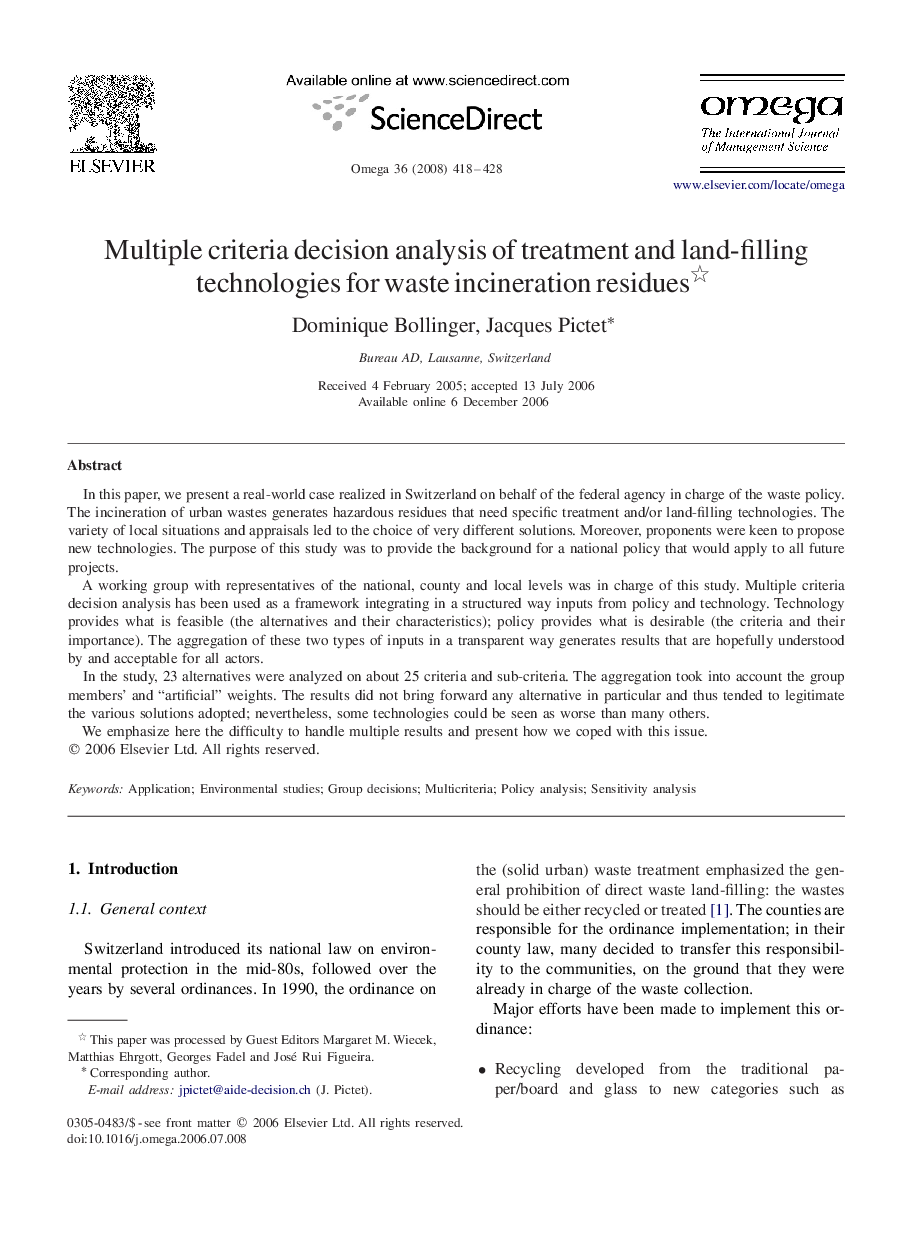| Article ID | Journal | Published Year | Pages | File Type |
|---|---|---|---|---|
| 1033105 | Omega | 2008 | 11 Pages |
In this paper, we present a real-world case realized in Switzerland on behalf of the federal agency in charge of the waste policy. The incineration of urban wastes generates hazardous residues that need specific treatment and/or land-filling technologies. The variety of local situations and appraisals led to the choice of very different solutions. Moreover, proponents were keen to propose new technologies. The purpose of this study was to provide the background for a national policy that would apply to all future projects.A working group with representatives of the national, county and local levels was in charge of this study. Multiple criteria decision analysis has been used as a framework integrating in a structured way inputs from policy and technology. Technology provides what is feasible (the alternatives and their characteristics); policy provides what is desirable (the criteria and their importance). The aggregation of these two types of inputs in a transparent way generates results that are hopefully understood by and acceptable for all actors.In the study, 23 alternatives were analyzed on about 25 criteria and sub-criteria. The aggregation took into account the group members’ and “artificial” weights. The results did not bring forward any alternative in particular and thus tended to legitimate the various solutions adopted; nevertheless, some technologies could be seen as worse than many others.We emphasize here the difficulty to handle multiple results and present how we coped with this issue.
